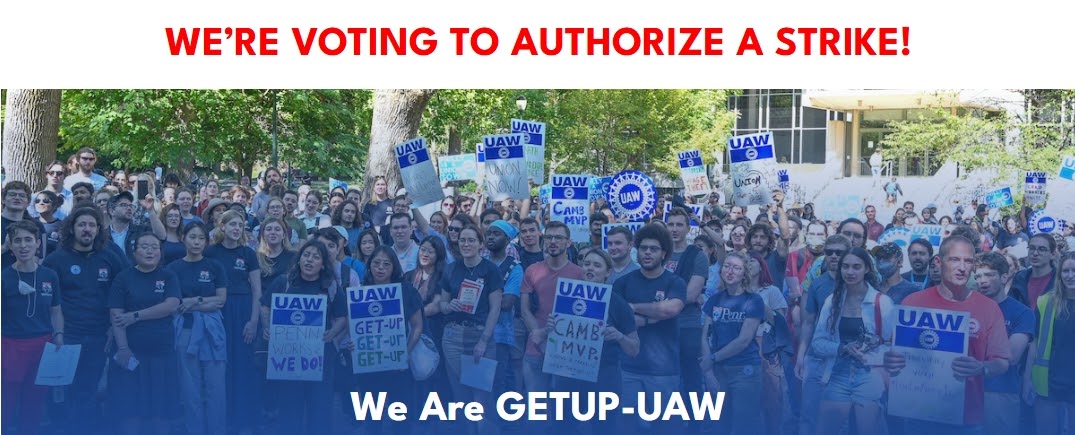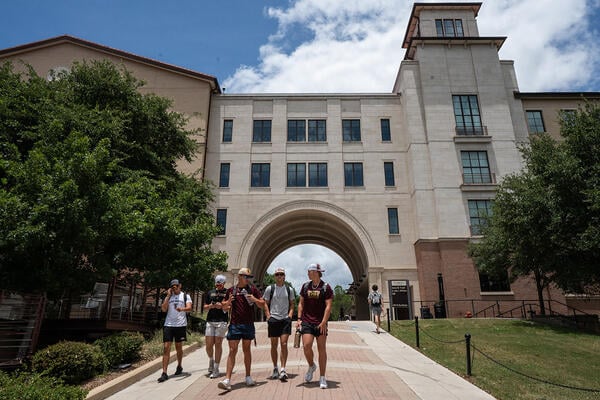As part of his administration’s broad push for government transparency, on Feb. 18 President Donald Trump ordered all federal agencies to publicize “to the maximum extent permitted by law” the complete details of every program, contract or grant they terminated.
“The American people have seen their tax dollars used to fund the passion projects of unelected bureaucrats rather than to advance the national interest,” Trump wrote in the memo, tilted “Radical Transparency About Wasteful Spending.” “[They] have a right to see how the Federal Government has wasted their hard-earned wages.”
Immediately after receiving a copy of the order, Inside Higher Ed reached out to the Department of Education and requested a comprehensive list of any and all such cuts, as well as explanations for why each contract was terminated. But two weeks later, the Education Department has yet to respond, and neither the department nor the staff it has partnered with from Elon Musk’s Department of Government Efficiency have publicly released any more information about the terminated contracts and grants.
In fact, DOGE—the agency leading the crusade of cuts—has continuously made edits to the “Wall of Receipts,” where it was supposedly outlining the cuts that have been made. Late Sunday night, the group deleted hundreds of contracts it had previously claimed to cancel, The New York Times first reported and Inside Higher Ed confirmed.
“It’s absolutely hypocrisy,” said Antoinette Flores, director of higher education accountability and quality at New America, a left-leaning think tank. “It feels like we’re all being gaslit. I don’t know why they are saying they want to be transparent without being transparent.”
For weeks, higher education leaders, policy experts and advocates have raised concerns as the department terminated more than 100 assorted grants and research contracts. Combined, the cuts are purportedly valued at nearly $1.9 billion, according to the department, and will affect a swath of institutions, including the department’s largest research arm as well as regional labs and external nonprofits that collaborated with local officials to improve learner outcomes. Combined, the cuts will dramatically impact the data available to researchers and policymakers focused on improving teaching and learning strategies, experts say.
Education scholars are worried that the cuts will leave state officials and college administrators with little evidence on which to base their strategies for student success and academic return on investment. One professor went as far as to say that the cuts are “an assault on the U.S.’s education data infrastructure.”
And though the Trump administration has flaunted its transparency and glorified DOGE’s website as a prime example of their success in providing public records, policy experts on both sides of the political aisle say the collective contract value displayed is an overestimate. Calculating savings is more nuanced than just listing a contract’s maximum potential value, they say—and even if they saved money, some of the terminated programs were congressionally mandated.
Over all, the sudden nature of the cuts, combined with the questionable accuracy of reported savings and a lack of further transparency, have left higher education advocacy groups deeply concerned.
“The cuts that happened recently are going to have far-reaching impacts, and those impacts could really be long term unless some rapid action is taken,” said Mamie Voight, president of the Institute for Higher Education Policy, a national nonprofit that campaigns for college access and student success. “This information is useful and essential to help policymakers steward taxpayer dollars responsibly.”
“To eliminate data, evidence and research is working in opposition to efficiency,” she later added.
The department did not respond to requests for comment on Voight’s and Flores’s criticisms.
A Data ‘Mismatch’
For many in higher ed, the executive actions Trump has taken since January raise questions about executive overreach and government transparency. But Nat Malkus, deputy director of education policy studies at the American Enterprise Institute, a right-leaning think tank, said, “It’s not a matter of deception” or even simply a question of transparency.
Instead, he said, “The question is, what’s the quality of the transparency? And what can we make of it?”
In a recent analysis, titled “Running Down DOGE’s Department of Education Receipts,” Malkus compared a leaked list of the 89 terminated Institute of Education Sciences contracts, along with detailed data from USASpending.gov, to those DOGE had posted on its website. He said he found major inconsistencies, or a “mismatch” in how they defined the purported contract value.
He also noted that though the “Wall of Receipts” has two separate tabs, one listing a contract’s value and another listing its savings, it displays the overall contract value first. The agency also declines to explain the difference between value and savings or how it calculates either.
As is the case with contract values, DOGE has been inconsistent in how it calculates savings. But what the agency most often displays to the public is how much a contract could theoretically cost if all options and add-ons are utilized—known as the potential total—minus the amount the government had currently agreed to spend by the end of the contract, or the total obligation. So in other words, Malkus said, DOGE is sharing how much the government could save if it were to continue the contract and receive the promised deliverables without adding any extra bells and whistles.
But that’s not what DOGE has done. Instead, it has terminated the contracts, and the Education Department won’t receive the final product it was paying for.
To best represent savings in that scenario, Malkus said, DOGE would calculate the difference between how much the government had agreed to spend by the end of the contract—the total obligation—and how much the government has already spent, or the total outlay.
“It’s weird because DOGE is publishing one set of savings that I don’t think actually makes sense to anybody, and they’re ignoring savings that they actually are conceivably getting,” Malkus said. “There are some good reasons that they might choose to do that. But DOGE would do well to explain what these dollars are, because right now, no one can tell.”
Malkus first spoke with Inside Higher Ed on Friday. But since then, the DOGE database has changed. Malkus said Tuesday that some of the initial trends in the way DOGE appeared to be calculating savings are no longer present and he has yet to find a new, even semiconsistent formula for how DOGE is calculating savings.
“The pace of change on DOGE’s numbers is dizzying even for someone like me who works at analyzing these receipts,” Malkus said. “Each week there have been changes to the number of contracts and within contracts the values and savings that DOGE is publishing. It’s hard to know if they are trying to get this right, because it’s impossible to find a consistent trail.”
I don’t attribute it to a desire to falsely advertise transparency and not deliver on it. I just think they need to do a much better job in the execution.”
—Nat Malkus
And even if there were a consistent, uniform formula for how DOGE officials are calculating efficiency, in some cases they still choose to highlight overall contract value rather than the direct savings. For example, a DOGE social media post about the Institute of Education Sciences cuts noted the contracts were worth $881 million in total.
“So are the actual savings equal to that implied? No, they are not,” Malkus said. “They are far, far less than that amount, somewhere around 25 percent of the total.”
The agency’s website doesn’t detail the team’s methodology or offer any explanation about why the cuts were made. Malkus believes this lack of clarification reflects the Trump administration’s effort to make notable cuts quickly. He added that while he doesn’t agree with every cut made, he understands and supports the “aggressiveness” of Trump and Musk’s approach.
“If they don’t move quickly, then there’s commissions, and then you have to go to the secretary, and they have interminable meetings and everything gets slowed down,” he said. “So one of their priorities is to move fast, and they don’t mind breaking things in the process.”
From Malkus’s perspective, the inconsistencies in how each cut is documented, the many edits that have been made to the DOGE database and the lack of explanation for each cut isn’t a matter of “malice or dishonesty,” but rather “mistakes.”
“I don’t think their savings are a clear estimation of what taxpayers are actually saving. But I don’t attribute it to a desire to falsely advertise transparency and not deliver on it. I just think they need to do a much better job in the execution,” he said.
A ‘Disregard for the Law’
Flores from New America conducted similar research and, like Malkus, found that the DOGE data doesn’t add up and exaggerates the savings. However, she had different views on the cause and effects of the agency’s aggressive, mistake-riddled approach.
“It’s like taking a wrecking ball to important government services,” she said. “If you’re trying to be efficient, you should take into consideration how far along is a contract? How much have we spent on this? Are we getting anything for the investment we’ve made?”
The Trump administration has broadly explained its cuts as a response to the “liberal ideology” of diversity, equity and inclusion and an effort to increase efficiency. But to Flores, they target anything but “waste, fraud and abuse.”
“The reason why the Trump administration says it wants to eliminate the Department of Education is because you don’t see improvement in student performance,” she said. “But if you want to improve student performance, you need to understand what is happening on the ground with students and evidence-based research on how to help students improve.”
And many of the studies affected by the contract cuts were nearly completed, she said. They were projects on which the agency had already spent hundreds of millions of dollars. So by cutting them now, the department loses the data and wastes taxpayer funds.
It’s absolutely hypocrisy. It feels like we’re all being gaslit.”
—Antoinette Flores
“I’ve talked to some researchers who worked at one of the organizations that had their contracts cut, and they said all work has to stop,” she said. “No matter how close it was to being finished, it just has to stop.”
Flores also noted that some of the studies terminated via contract cuts—particularly the National Postsecondary Student Aid Study—are congressionally mandated, so ending them is unconstitutional.
“The people making these cuts don’t necessarily understand the math. They don’t necessarily understand the contracts or the purpose of them, and there’s a disregard for the law,” she said.
Voight from IHEP agreed, describing projects like NPSAS as “core data sets that the field relies upon.”
“Lawmakers often turn to these types of longitudinal and sample studies to answer questions that they have as they’re trying to build policies. And states turn to this type of information to help them benchmark how they’re faring against national numbers,” she said. “So these studies themselves are a really, really devastating loss.”
Even some contracts that weren’t cut will suffer consequences, Voight noted. For example, though the Statewide Longitudinal Data Systems grant program has so far been shielded from outright termination, she said, it didn’t come away entirely unscathed. The data systems rely on key information from a program called Common Education Data Standards, which was slashed; without CEDS, the grant program won’t be nearly as effective.
“The cuts have actually been misunderstanding the interrelationships between many of these different products,” Voight said.
Over all, she believes the Department of Education, and specifically IES, are not the best places for efficiency cuts. The $807.6 million budget for the Institute of Education Sciences in fiscal year 2024 is just “a drop in the bucket” compared with the amount spent on other research and development groups, like the $4.1 billion given to the Defense Advanced Research Projects Agency the same year.
“To think about how to build efficiencies is certainly not a bad question to ask. But IES is already such a lean operation, and the way that they are trying to build evidence is critical,” she said. “So we should really be focusing on investment in our education research infrastructure and taking a strategic approach to any changes that are going to be made.”







